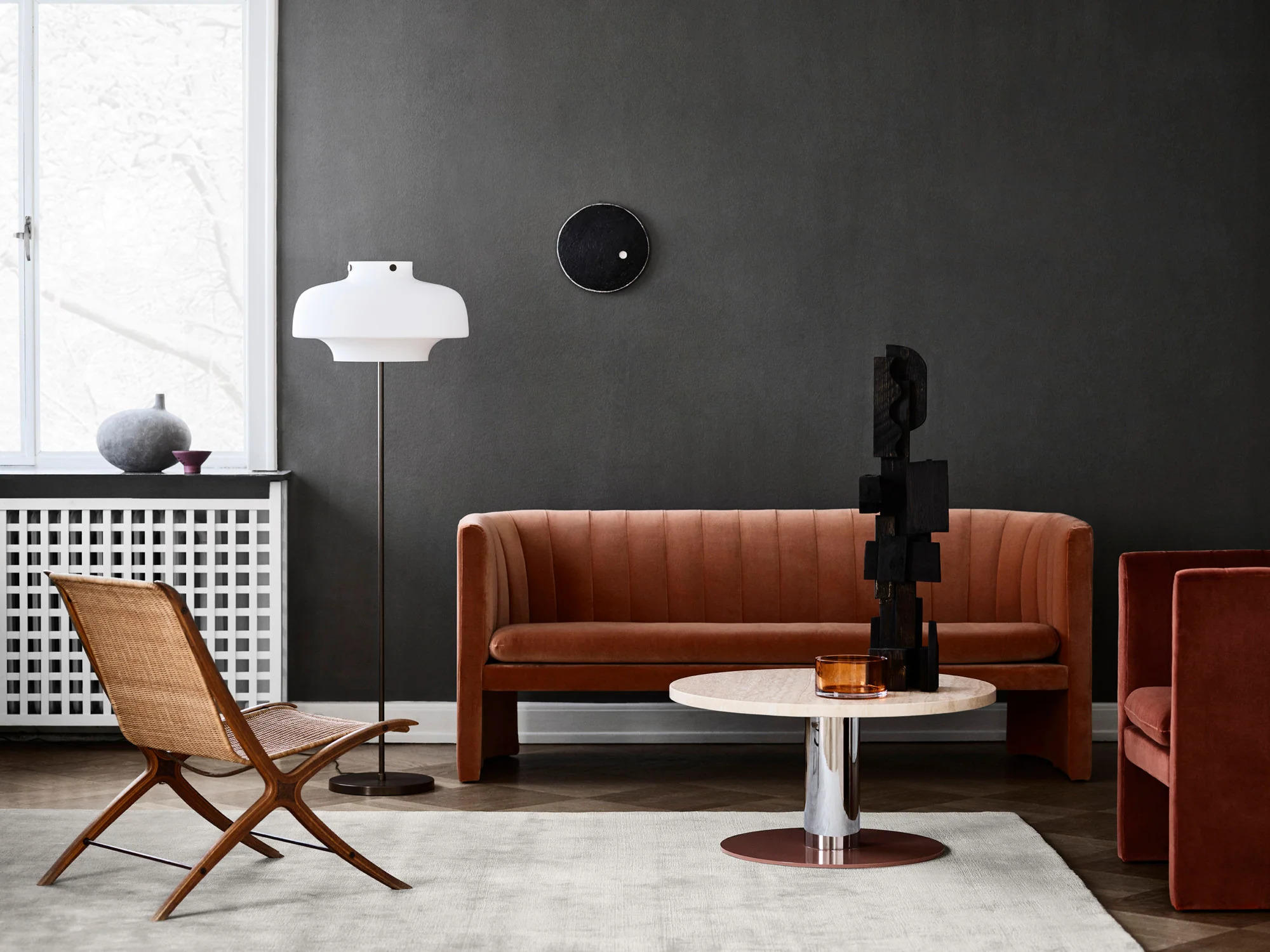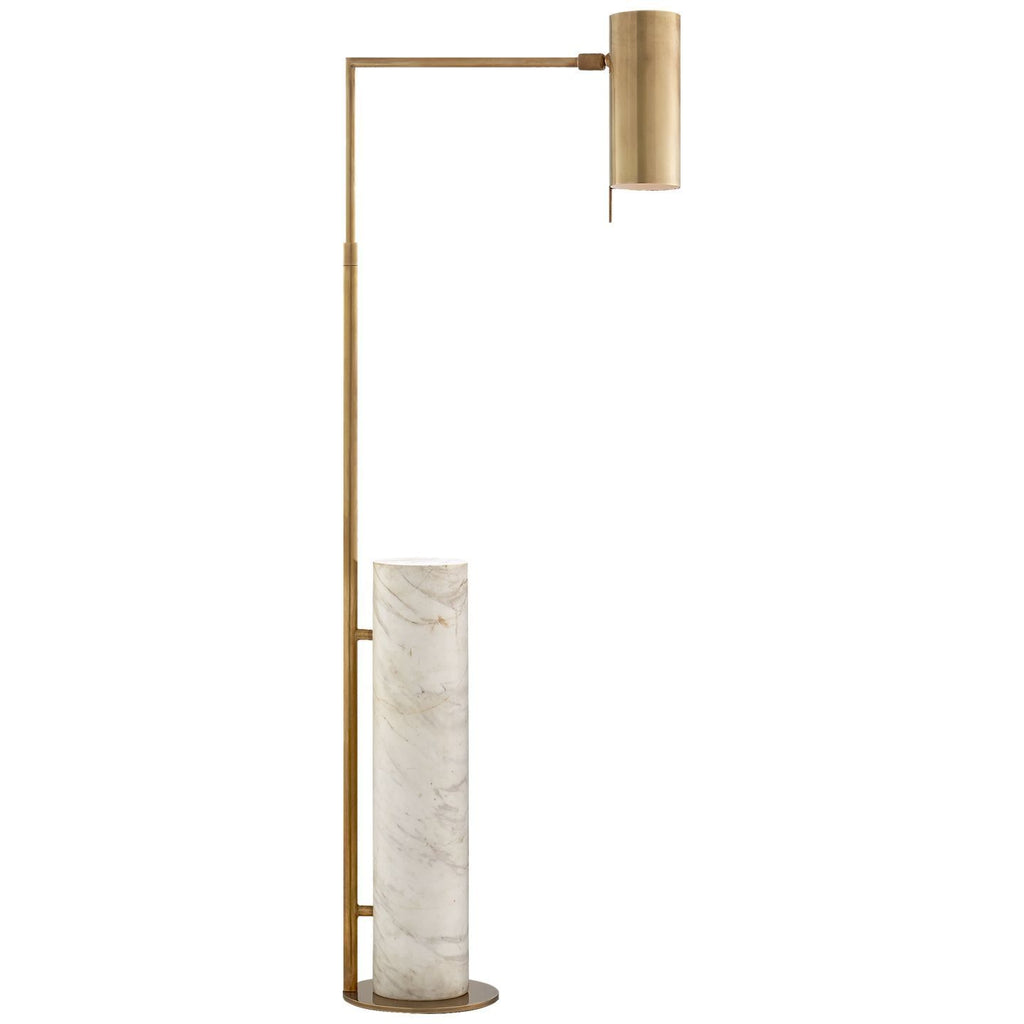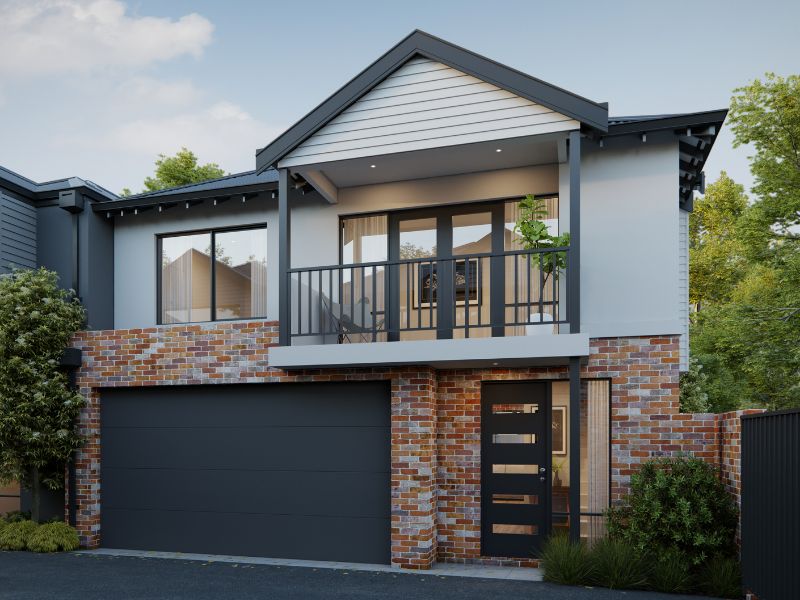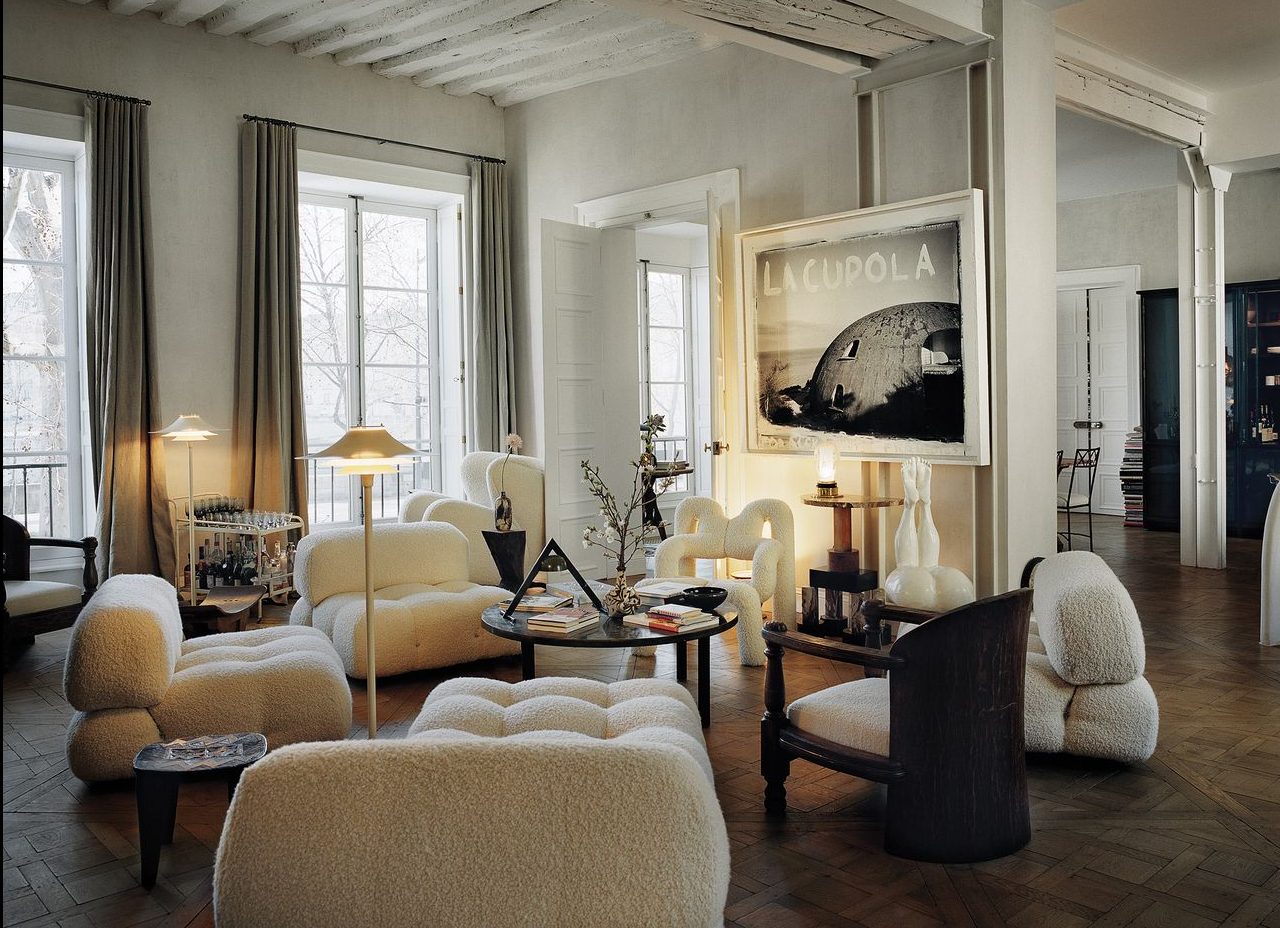It’s that time of year when getting off the lounge seems like way too much effort. Instead, a comfortable chair, a good book and a warm beverage beckon. Making sure your living space works, whether you’re looking to create zones within an open plan, or you want to read without straining your eyes, depends on your choice of lighting. As well as being up to the task to create mood and function, these floor lamps make a style statement. We’ve selected the best, from classic designs to timeless contemporary to ensure your living areas are inviting, as well as inspiring.
Tote Standing Lamp

The classic shapes of the Tote standing lamp by Tide Design have been given a clean, contemporary feel with the added warmth of natural timber. It’s the perfect shape for those who love tradition with a side of biophilic design. Available in three timbers, from $1,430 from Workshopped.
Foscarini Twiggy floor lamp

Made from coated fibreglass , coated metal and aluminium, the impossibly flexible Foscarini Twiggy floor lamp is ideal over lounges and cosy corners. From a design perspective, it breaks up strong lineal shapes associated with modular sofas. Plus, it creates pools of light perfect for zoning, $2,885 from Space.
Cliff 02 Lamp
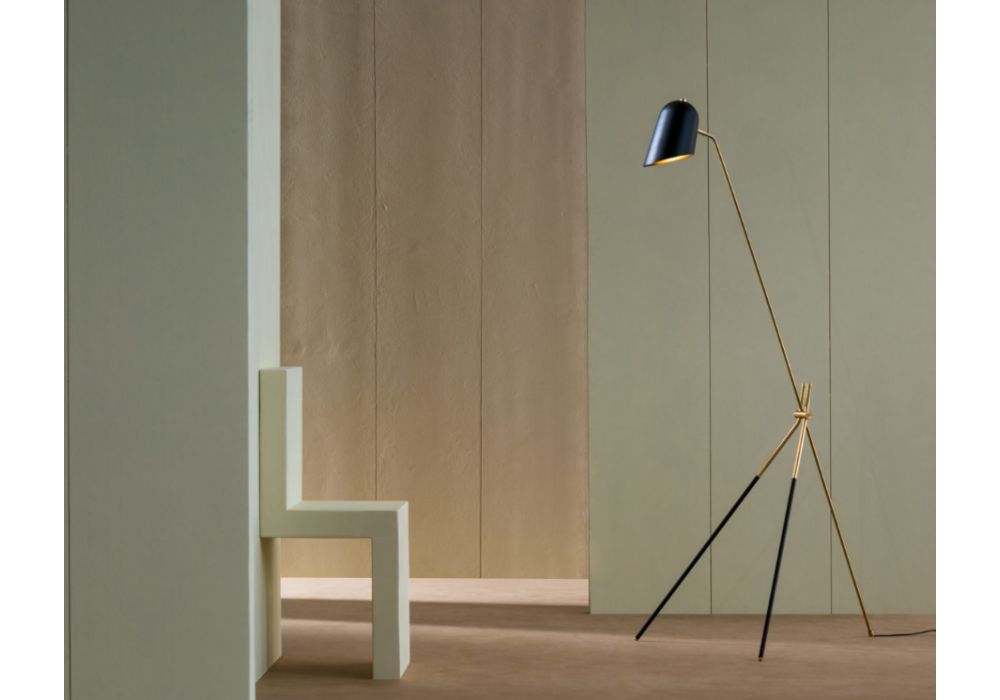
The tripod base of the brass and black matte Cliff 02 lamp from the Lambert & Fils workshop adds extra stability with a contemporary edge. A study in minimalism, the brass finishes deliver a jewel-like finish to the supporting rods, $4,380 from Living Edge.
Copenhagen SC14 Lamp

Perfect for creating visual warmth on cold nights, the Copenhagen SC14 lamp by &Tradition emits a soft ambient light with the control of a dimmer option and opal glass shade, $2,448 from Cult
Alma Lamp
US designer Kelly Wearstler’s stunning Alma lamp has the solidity of a white marble base and the allure of an antique burnished brass base. The cylindrical head of the pharmacy floor lamp can rotate 20 degrees left or right to best direct light, $2,079 from Montauk Lighting.
Tonone Bolt 2 Arm Floor Lamp
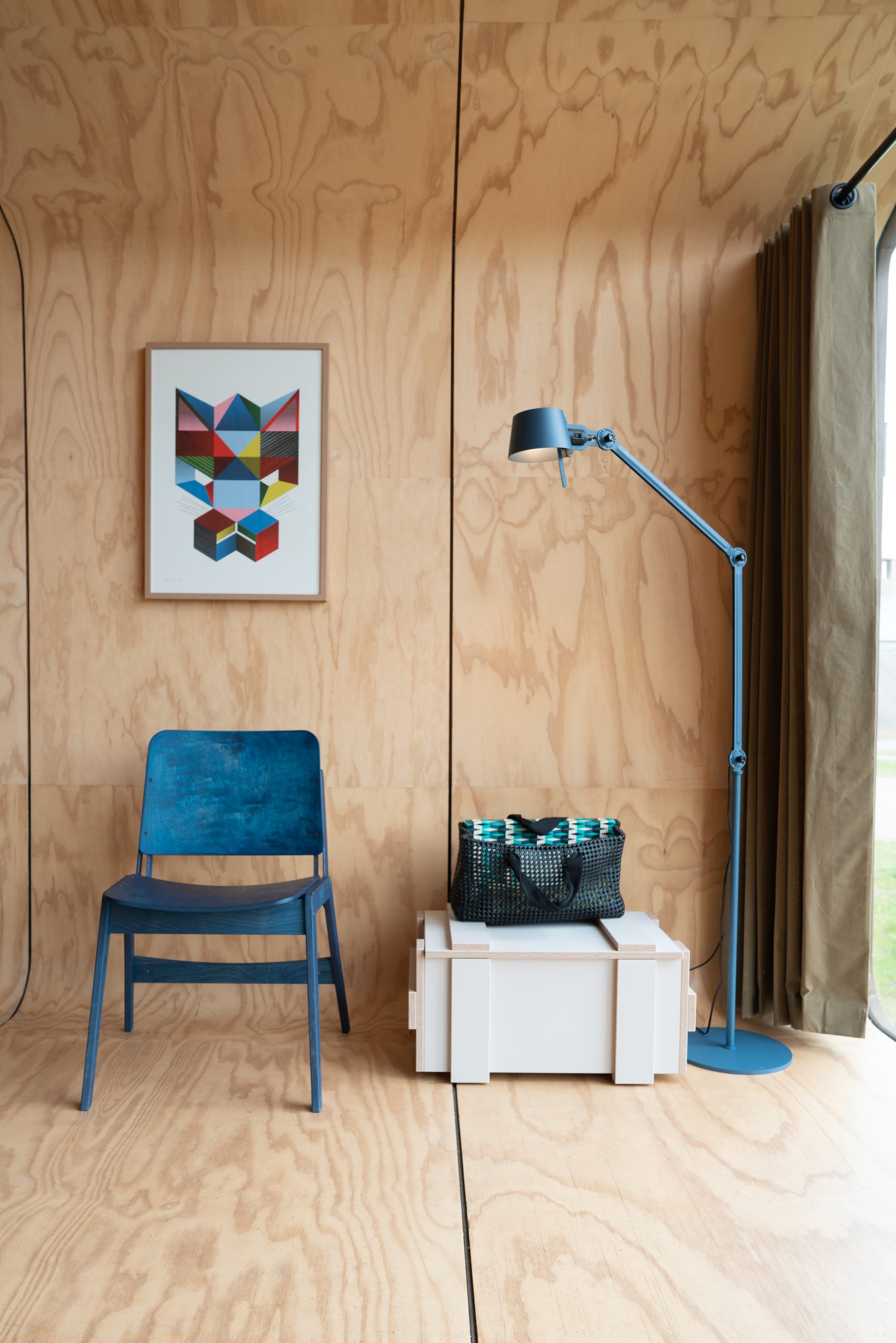
This lamp is right at home in any room in the house, from the living room to the kids’ bedrooms. Adjustable at two points to allow a change of height, as well as direction, it has a steel base and rods with an aluminium shade. It’s also available in a range of colours suitable for contemporary or traditional interiors, $1100 from Mondopiero.
What light is best for living room lamps?
Lamps are an ideal way to create a sense of warmth in your living room but it’s critical to choose the right light bulbs to avoid your spaces looking like a convenience store. The colour temperature of lights are measured in Kelvins, with 2700k-3000k considered warm and 4000k-5000k considered cool light.
How much should you spend on a floor lamp?
The good news is floor lamps are available at a wide range of price points. Like most furniture, however, you get what you pay for. Prices for a reasonably good floor lamp start from $200 up to $5000 or more. Ensure it has at least a 12-month warranty.
What type of floor lamp gives off the most light?
This will depend on the type of lightbulb you use, as well as the style of lamp shade. Light intensity is measured in lumens and watts. A standard 40w lightbulb emits 450 lumens, while a 60w bulb emits 800 lumens. LED (light emitting diodes) lights output the most light in the most energy efficient way. A wider lampshade design will allow the light to extend its reach.
What a quarter-million dollars gets you in the western capital.
Alexandre de Betak and his wife are focusing on their most personal project yet.
As Paris makes its final preparations for the Olympic games, its residents are busy with their own—packing their suitcases, confirming their reservations, and getting out of town.
Worried about the hordes of crowds and overall chaos the Olympics could bring, Parisians are fleeing the city in droves and inundating resort cities around the country. Hotels and holiday rentals in some of France’s most popular vacation destinations—from the French Riviera in the south to the beaches of Normandy in the north—say they are expecting massive crowds this year in advance of the Olympics. The games will run from July 26-Aug. 1.
“It’s already a major holiday season for us, and beyond that, we have the Olympics,” says Stéphane Personeni, general manager of the Lily of the Valley hotel in Saint Tropez. “People began booking early this year.”
Personeni’s hotel typically has no issues filling its rooms each summer—by May of each year, the luxury hotel typically finds itself completely booked out for the months of July and August. But this year, the 53-room hotel began filling up for summer reservations in February.
“We told our regular guests that everything—hotels, apartments, villas—are going to be hard to find this summer,” Personeni says. His neighbours around Saint Tropez say they’re similarly booked up.
As of March, the online marketplace Gens de Confiance (“Trusted People”), saw a 50% increase in reservations from Parisians seeking vacation rentals outside the capital during the Olympics.
Already, August is a popular vacation time for the French. With a minimum of five weeks of vacation mandated by law, many decide to take the entire month off, renting out villas in beachside destinations for longer periods.
But beyond the typical August travel, the Olympics are having a real impact, says Bertille Marchal, a spokesperson for Gens de Confiance.
“We’ve seen nearly three times more reservations for the dates of the Olympics than the following two weeks,” Marchal says. “The increase is definitely linked to the Olympic Games.”

Getty Images
According to the site, the most sought-out vacation destinations are Morbihan and Loire-Atlantique, a seaside region in the northwest; le Var, a coastal area within the southeast of France along the Côte d’Azur; and the island of Corsica in the Mediterranean.
Meanwhile, the Olympics haven’t necessarily been a boon to foreign tourism in the country. Many tourists who might have otherwise come to France are avoiding it this year in favour of other European capitals. In Paris, demand for stays at high-end hotels has collapsed, with bookings down 50% in July compared to last year, according to UMIH Prestige, which represents hotels charging at least €800 ($865) a night for rooms.
Earlier this year, high-end restaurants and concierges said the Olympics might even be an opportunity to score a hard-get-seat at the city’s fine dining.
In the Occitanie region in southwest France, the overall number of reservations this summer hasn’t changed much from last year, says Vincent Gare, president of the regional tourism committee there.
“But looking further at the numbers, we do see an increase in the clientele coming from the Paris region,” Gare told Le Figaro, noting that the increase in reservations has fallen directly on the dates of the Olympic games.
Michel Barré, a retiree living in Paris’s Le Marais neighbourhood, is one of those opting for the beach rather than the opening ceremony. In January, he booked a stay in Normandy for two weeks.
“Even though it’s a major European capital, Paris is still a small city—it’s a massive effort to host all of these events,” Barré says. “The Olympics are going to be a mess.”
More than anything, he just wants some calm after an event-filled summer in Paris, which just before the Olympics experienced the drama of a snap election called by Macron.
“It’s been a hectic summer here,” he says.

AFP via Getty Images
Parisians—Barré included—feel that the city, by over-catering to its tourists, is driving out many residents.
Parts of the Seine—usually one of the most popular summertime hangout spots —have been closed off for weeks as the city installs bleachers and Olympics signage. In certain neighbourhoods, residents will need to scan a QR code with police to access their own apartments. And from the Olympics to Sept. 8, Paris is nearly doubling the price of transit tickets from €2.15 to €4 per ride.
The city’s clear willingness to capitalise on its tourists has motivated some residents to do the same. In March, the number of active Airbnb listings in Paris reached an all-time high as hosts rushed to list their apartments. Listings grew 40% from the same time last year, according to the company.
With their regular clients taking off, Parisian restaurants and merchants are complaining that business is down.
“Are there any Parisians left in Paris?” Alaine Fontaine, president of the restaurant industry association, told the radio station Franceinfo on Sunday. “For the last three weeks, there haven’t been any here.”
Still, for all the talk of those leaving, there are plenty who have decided to stick around.
Jay Swanson, an American expat and YouTuber, can’t imagine leaving during the Olympics—he secured his tickets to see ping pong and volleyball last year. He’s also less concerned about the crowds and road closures than others, having just put together a series of videos explaining how to navigate Paris during the games.
“It’s been 100 years since the Games came to Paris; when else will we get a chance to host the world like this?” Swanson says. “So many Parisians are leaving and tourism is down, so not only will it be quiet but the only people left will be here for a party.”





